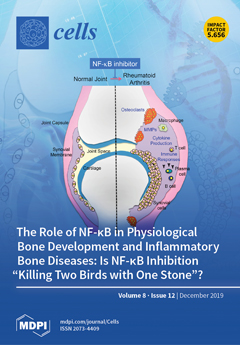Guanosine, a guanine-based purine nucleoside, has been described as a neuromodulator that exerts neuroprotective effects in animal and cellular ischemia models. However, guanosine’s exact mechanism of action and molecular targets have not yet been identified. Here, we aimed to elucidate a role of
[...] Read more.
Guanosine, a guanine-based purine nucleoside, has been described as a neuromodulator that exerts neuroprotective effects in animal and cellular ischemia models. However, guanosine’s exact mechanism of action and molecular targets have not yet been identified. Here, we aimed to elucidate a role of adenosine receptors (ARs) in mediating guanosine effects. We investigated the neuroprotective effects of guanosine in hippocampal slices from A
2AR-deficient mice (A
2AR
−/−) subjected to oxygen/glucose deprivation (OGD). Next, we assessed guanosine binding at ARs taking advantage of a fluorescent-selective A
2AR antagonist (MRS7396) which could engage in a bioluminescence resonance energy transfer (BRET) process with NanoLuc-tagged A
2AR. Next, we evaluated functional AR activation by determining cAMP and calcium accumulation. Finally, we assessed the impact of A
1R and A
2AR co-expression in guanosine-mediated impedance responses in living cells. Guanosine prevented the reduction of cellular viability and increased reactive oxygen species generation induced by OGD in hippocampal slices from wild-type, but not from A
2AR
−/− mice. Notably, while guanosine was not able to modify MRS7396 binding to A
2AR-expressing cells, a partial blockade was observed in cells co-expressing A
1R and A
2AR. The relevance of the A
1R and A
2AR interaction in guanosine effects was further substantiated by means of functional assays (i.e., cAMP and calcium determinations), since guanosine only blocked A
2AR agonist-mediated effects in doubly expressing A
1R and A
2AR cells. Interestingly, while guanosine did not affect A
1R/A
2AR heteromer formation, it reduced A
2AR agonist-mediated cell impedance responses. Our results indicate that guanosine-induced effects may require both A
1R and A
2AR co-expression, thus identifying a molecular substrate that may allow fine tuning of guanosine-mediated responses.
Full article






